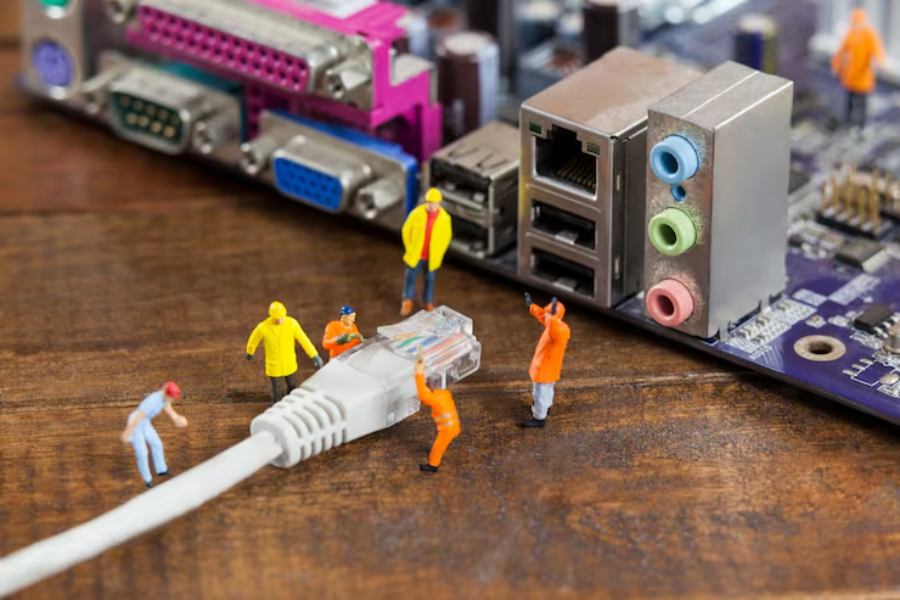
The digital world thrives on connectivity, but behind every email, video call, or Google search is a set of rules that makes communication possible. One of the most common questions new learners have is How do IP addresses and subnet masks work? These two elements form the foundation of modern networking, enabling devices to locate one another, exchange information, and manage traffic efficiently without chaos.
An IP address is like a street address for your device, identifying its location within a vast digital network. The subnet mask, on the other hand, functions like a zoning rule—it divides networks into smaller, manageable parts, making communication more efficient. Understanding them is crucial for IT professionals, students, and even casual tech users who want to know how their devices communicate with the internet.
This article breaks down the mechanics, provides real-world examples, and explains why knowing how IP addresses and subnet masks work is vital for everything from home Wi-Fi setups to enterprise-level security.
Basics of IP Addresses and Subnet Masks
IP addresses and subnet masks are the backbone of digital communication. At the simplest level, an IP address uniquely identifies a device in a network, while a subnet mask determines which part of the address refers to the network and which part refers to the host. Without this division, data packets would get lost, and devices would be unable to find each other reliably.
IPv4 addresses, the most widely used format, consist of 32 bits, divided into four octets. Each octet is represented as a number between 0 and 255, like 192.168.1.1. Alongside this, the subnet mask instructs the system how much of the IP address represents the “network” and how much represents the “host.” For example, a subnet mask of 255.255.255.0 means the first three octets identify the network, while the last identifies the host device.
The introduction of IPv6 expanded the number of addresses to 128 bits due to the exhaustion of the IPv4 address space. Even so, subnet masks—or their equivalents—still play the same role: defining network boundaries.
Asking how IP addresses and subnet masks work is like asking how cities function. The IP is the street address, while the subnet mask is the city planner’s map, dividing areas into blocks. Without them, networking would collapse into disorder.
The Role of IP Address Classes and Subnetting
Before diving into how IP addresses and subnet masks work, it’s essential to understand their origins and the role of subnetting in organizing networks.
IP Address Classes Explained
In the early days of networking, IP addresses were grouped into specific classes—A, B, C, D, and E. Each class determined the number of devices that could be supported within a given network. For example, Class A networks could accommodate millions of hosts, while Class C networks were suited for smaller environments with only a few hundred devices.
How Subnet Masks Define Boundaries
Subnet masks worked in conjunction with these classes to identify which portion of the IP address represented the network and which part referred to individual hosts. A typical example is the Class C mask of 255.255.255.0, which allowed for 254 usable host addresses.
Shifting Away from Classful Addressing
Eventually, the limitations of rigid class structures led to the adoption of Classless Inter-Domain Routing (CIDR). This system provided network administrators with more flexibility and efficiency, although the role of subnet masks remained vital.
Subnetting as a Tool for Efficiency
Subnetting divides a larger network into smaller, more manageable segments. Much like using a creative kingdom name generator to split a fictional empire into distinct regions, subnetting organizes digital networks into zones that improve performance, limit congestion, and enhance security.
Real-World Impact
For IT professionals, mastering how do IP addresses and subnet masks work is critical. Effective subnetting supports thousands of connected devices, reduces bottlenecks, and ensures communication flows seamlessly across the entire network.
Essential Functions of Subnet Masks
Subnet masks may look complicated, but their functions are easy to grasp:
- Define Networks: They separate the network portion of an IP address from the host portion.
- Improve Efficiency: By controlling network size, they prevent overcrowding.
- Enhance Security: They limit access by segmenting devices into subnets.
- Support Routing: Routers use subnet masks to determine where to send data.
- Enable Scalability: Subnetting allows administrators to grow networks without chaos.
In short, subnet masks are the silent organizers that make networking possible. Without them, asking how IP addresses and subnet masks work would lead to a much more chaotic answer.
Real-World Applications of IP Addresses and Subnets
Subnetting and IP addressing are more than just technical concepts; they have practical applications across various business, home, and digital environments. In corporate settings, organizations often divide networks by department—such as HR, Finance, and IT—to keep sensitive data private while improving overall performance. This segmentation ensures that traffic remains efficient and prevents unnecessary slowdowns.
In home networks, the process is more straightforward but equally important. Routers automatically assign IP addresses through DHCP, enabling multiple devices to connect seamlessly without requiring manual configuration.
Cybersecurity also depends heavily on these principles. Firewalls, intrusion detection systems, and access controls use subnet masks to enforce security policies. Administrators apply subnetting strategies to isolate sensitive servers or databases from general user traffic, reducing exposure to threats.
Even modern cloud platforms, such as AWS, Azure, and Google Cloud, rely on subnetting to organize resources within virtual private networks, and mastering how IP addresses and subnet masks work ensures smooth, secure, and efficient connectivity across every scenario.
Advanced Concepts in IP and Subnetting
As networks scale and technology evolves, advanced techniques in IP addressing and subnetting provide administrators with powerful tools to manage complexity.
- CIDR and VLSM: Classless Inter-Domain Routing (CIDR) and Variable-Length Subnet Masking (VLSM) provide administrators with significantly greater flexibility than the old class-based system. These methods allow precise allocation of IP address space, ensuring that networks avoid waste and are segmented exactly as needed.
- IPv6 and Subnetting: With IPv6, subnetting expands to an even larger scale. Although the address space is enormous, subnetting plays a critical role in defining boundaries and organizing hosts. This ensures smooth routing and efficient resource management across global networks.
- Troubleshooting with Subnets: Subnet masks are not just for planning; they are also essential tools for diagnosing issues. Network administrators rely on them to detect conflicts, isolate faulty areas, and plan expansions without disrupting current services.
- Importance for IT Careers: For aspiring network engineers, mastering how do IP addresses and subnet masks work is fundamental. Employers value professionals who can design, secure, and maintain efficient subnet structures across modern infrastructures.
Conclusion
So, how do IP addresses and subnet masks work? In simple terms, IP addresses serve as identifiers for devices, while subnet masks provide the structure that organizes these devices into efficient and manageable networks. Together, they form the foundation of modern connectivity, ensuring communication flows securely and without confusion. Without this pairing, today’s internet would lack order and reliability. For students, grasping these basics is an entry point into the world of networking. For IT professionals, it is an essential skill for designing, troubleshooting, and scaling systems. For everyday users, even a general understanding helps make sense of how devices stay connected in a rapidly growing digital environment.
FAQ’s
What is the purpose of a subnet mask?
A subnet mask divides an IP address into network and host portions, making communication efficient and secure.
Can devices work without subnet masks?
Not effectively. Subnet masks are essential for routing and identifying which devices belong to which network.
What’s the difference between IPv4 and IPv6 addresses?
IPv4 uses 32 bits and allows about 4.3 billion addresses, while IPv6 uses 128 bits, offering nearly unlimited combinations.
Why is subnetting important in large networks?
It reduces congestion, improves performance, and adds layers of security by isolating devices into subgroups.
How do IP addresses and subnet masks work together in home networks?
Routers assign private IPs and use subnet masks to define the local network, ensuring smooth internet connectivity for all devices.
What is CIDR notation?
CIDR expresses subnet masks in a simplified form (e.g., /24 for 255.255.255.0), making it easier to understand and configure.






